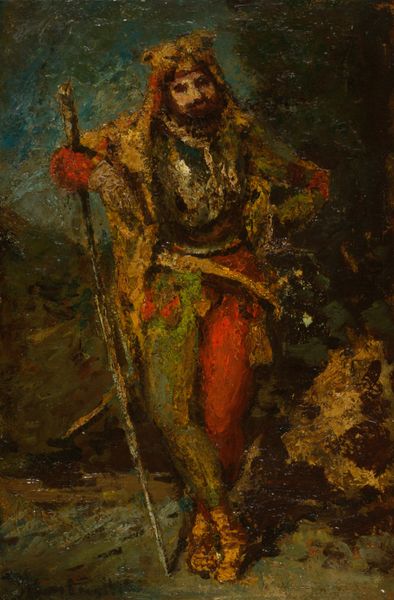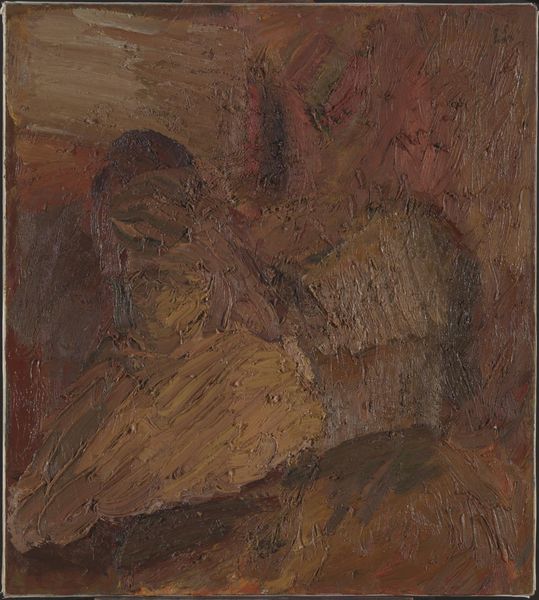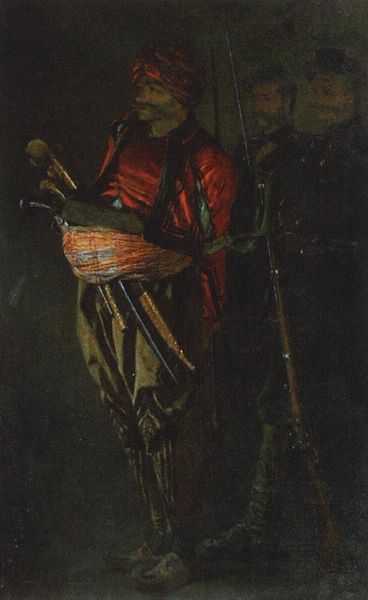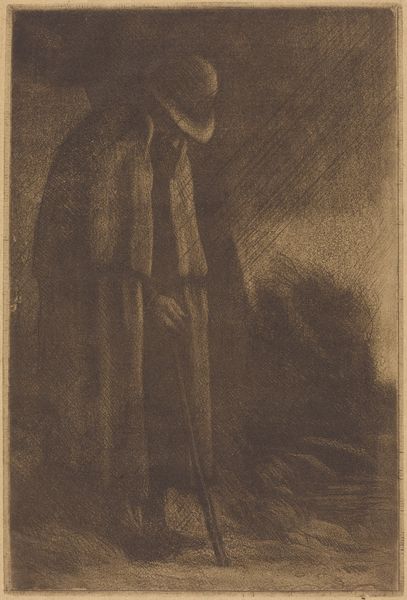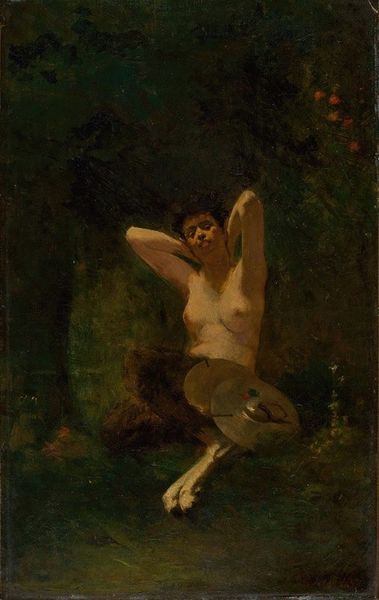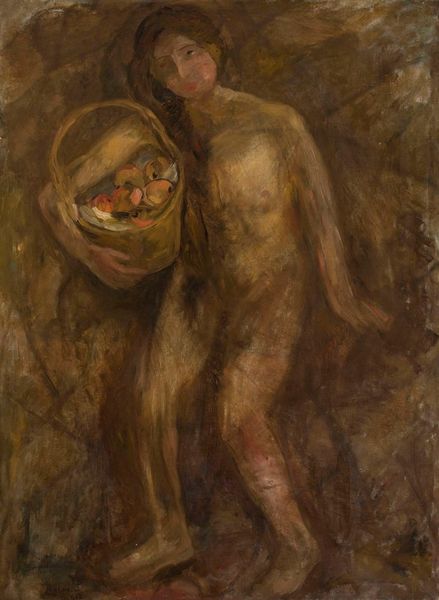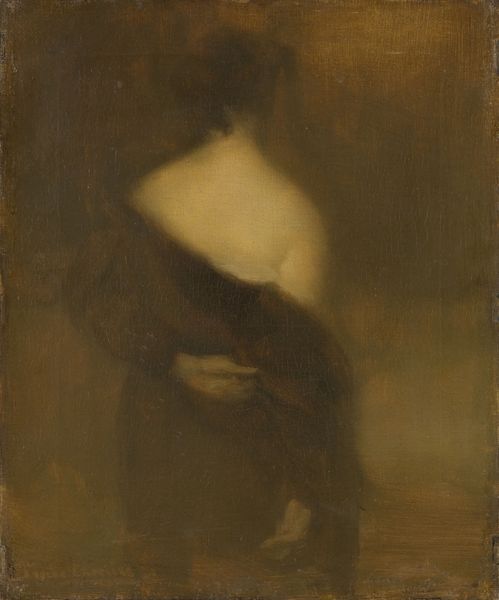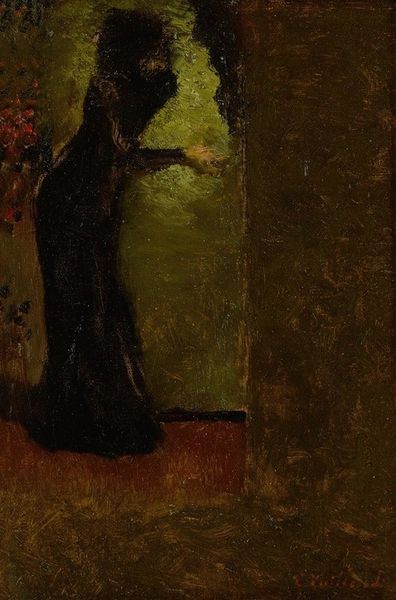
painting, oil-paint
#
portrait
#
figurative
#
painting
#
oil-paint
#
landscape
#
figuration
#
genre-painting
#
realism
Copyright: Public Domain: Artvee
Curator: Before us is Jean-François Millet's "The Normandy Milkmaid," executed in oil on canvas circa 1848-1849. Editor: It’s so somber. The restricted palette and near lack of contrast give the piece this intensely cloistered, almost private, mood. It really holds the figure captive. Curator: Indeed. Millet uses the earth tones masterfully to suggest both the woman’s connection to, and perhaps imprisonment by, the land and her labor. Notice how her form nearly blends with the surrounding field. We see an economy of color, prioritizing the relationship between forms rather than their distinct qualities. Editor: I find myself thinking about the materiality of her work. That yoke she carries looks rough, functional, likely handmade from readily available wood. How different is this labor-intensive life from the life of those who would possess such a rendering? The very production of milk relies on a long chain of events and physical exertion largely divorced from the consumer's experience. Curator: Yes, the realism here doesn't romanticize, but rather presents an unvarnished view of rural life. This refusal to idealize places "The Normandy Milkmaid" firmly within a growing movement that challenged academic painting styles and their tendency towards elaborate mythologies and grand narratives. Instead, Millet presents the everyday. Editor: And isn’t that very conscious, that choice of the “everyday”? This seems to argue for the validity and dignity of labor, of connecting value to the process as much as to the result. She becomes less of an anonymous subject and more representative of a societal backbone. Curator: I concur, although one could argue that its muted tonality also underscores the monotonous aspect of labor that strips individual subjectivity and the beauty of the landscape in this rendering, which becomes just background. Editor: Maybe, but it pushes me to think beyond aesthetics. This work feels deeply rooted in questions of access, labor, and the stark contrast between rural and urban experience during that era. It brings me back to the land, so to speak. Curator: A stimulating way of reflecting on it indeed! Editor: A most interesting juxtaposition to chew on!
Comments
No comments
Be the first to comment and join the conversation on the ultimate creative platform.
